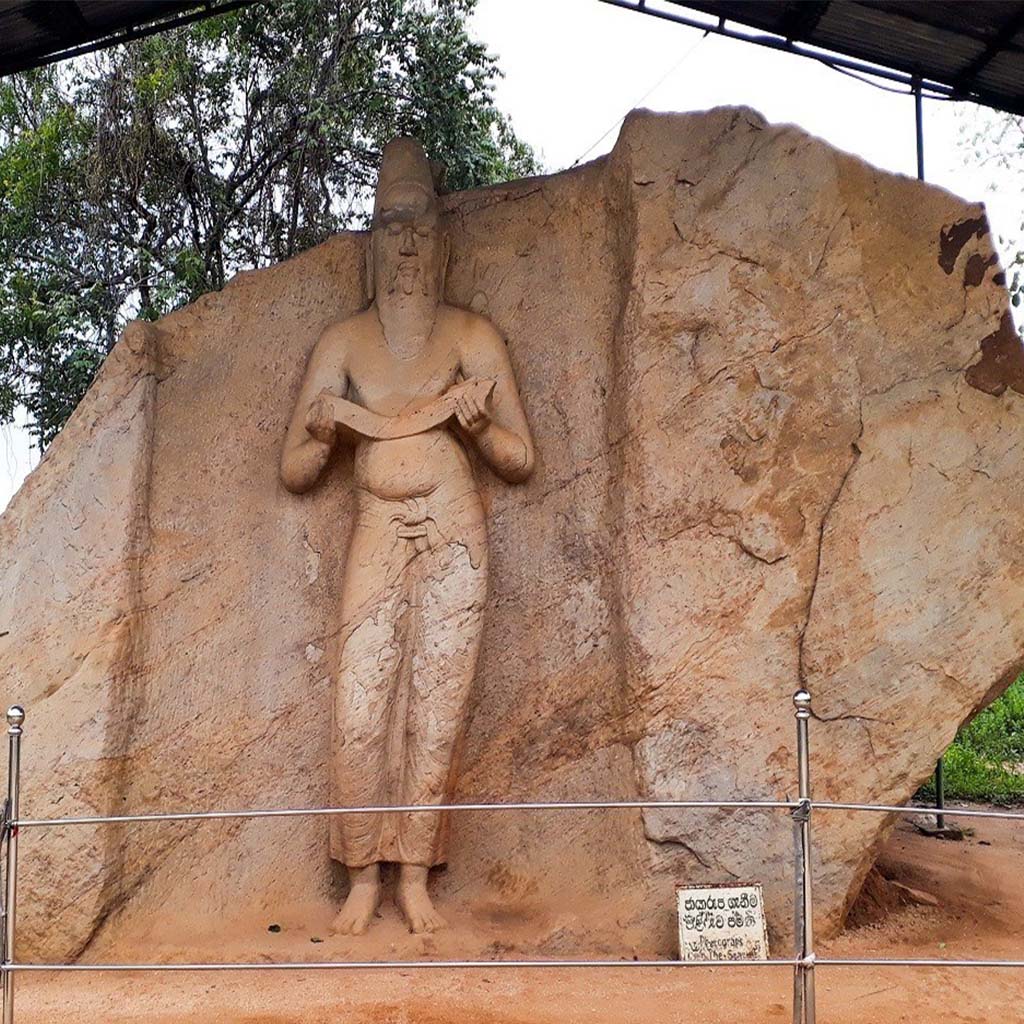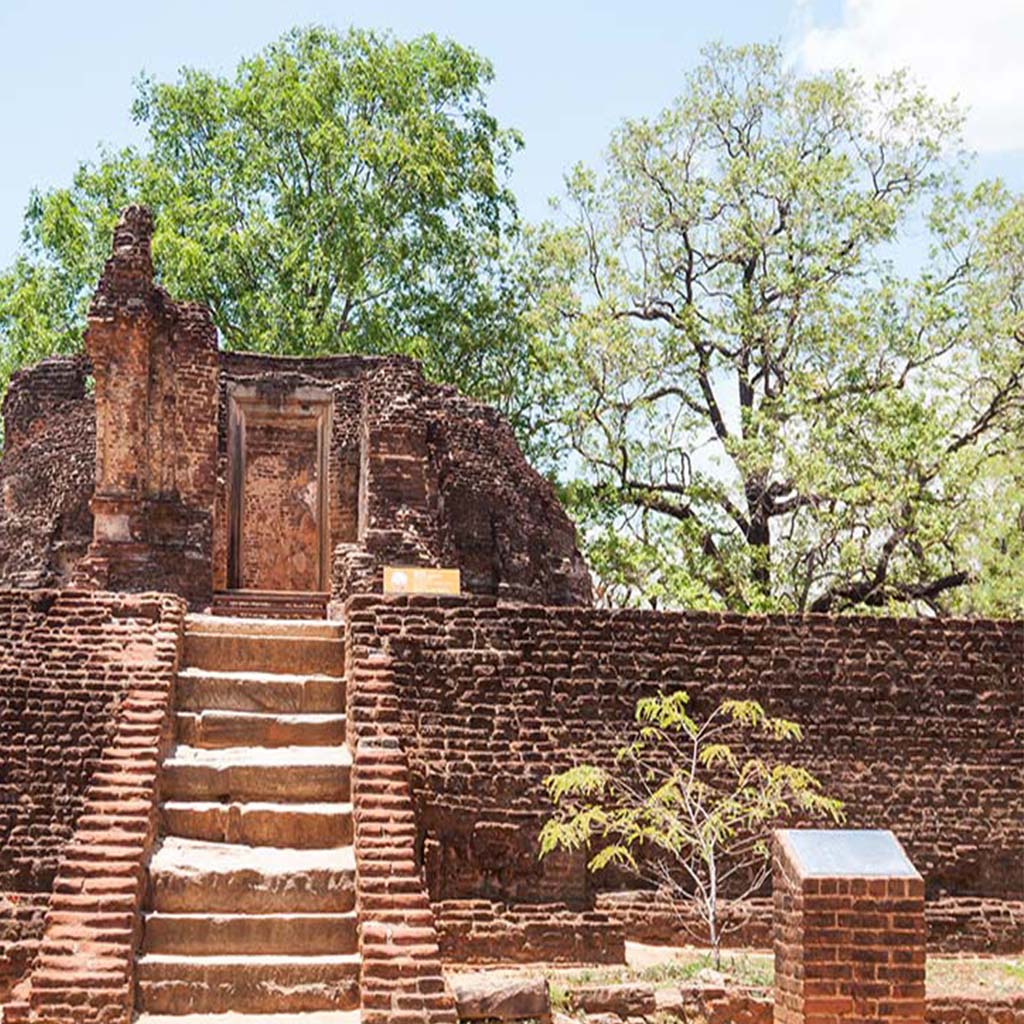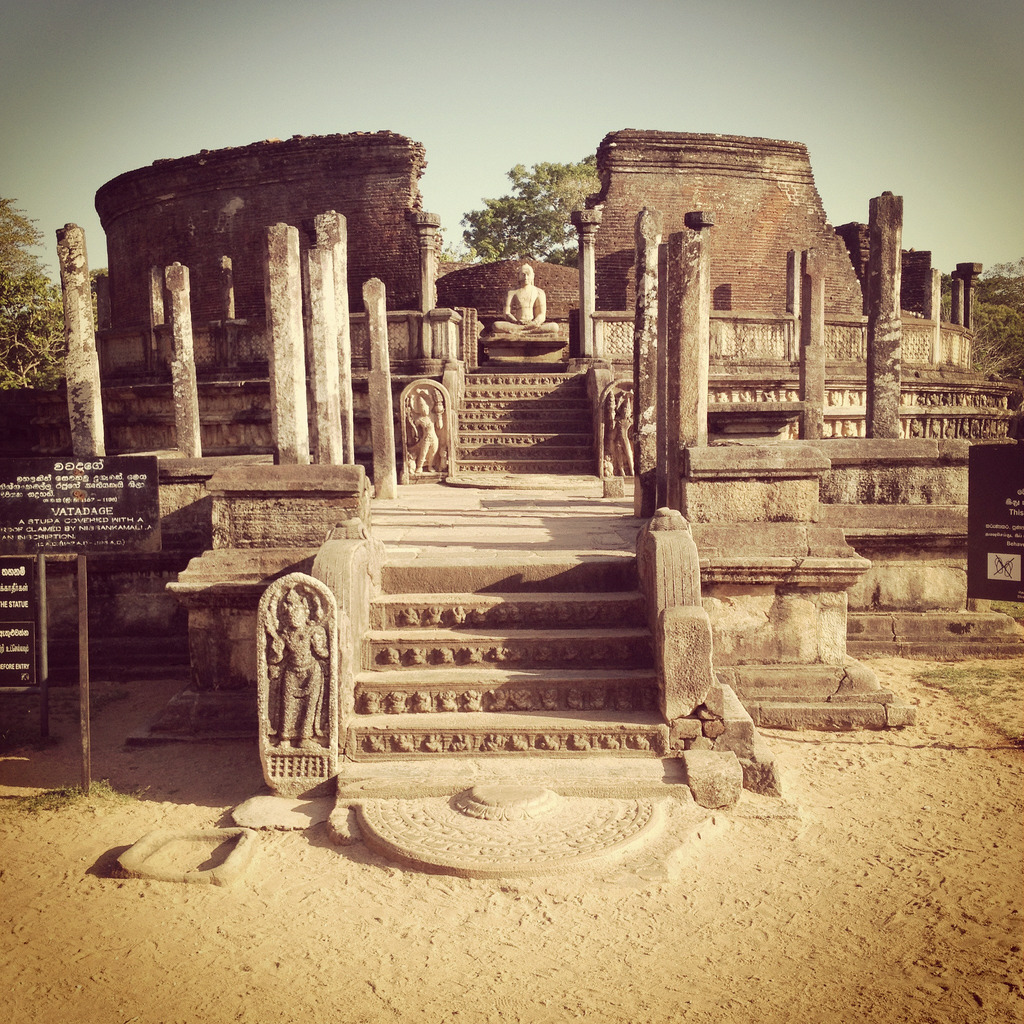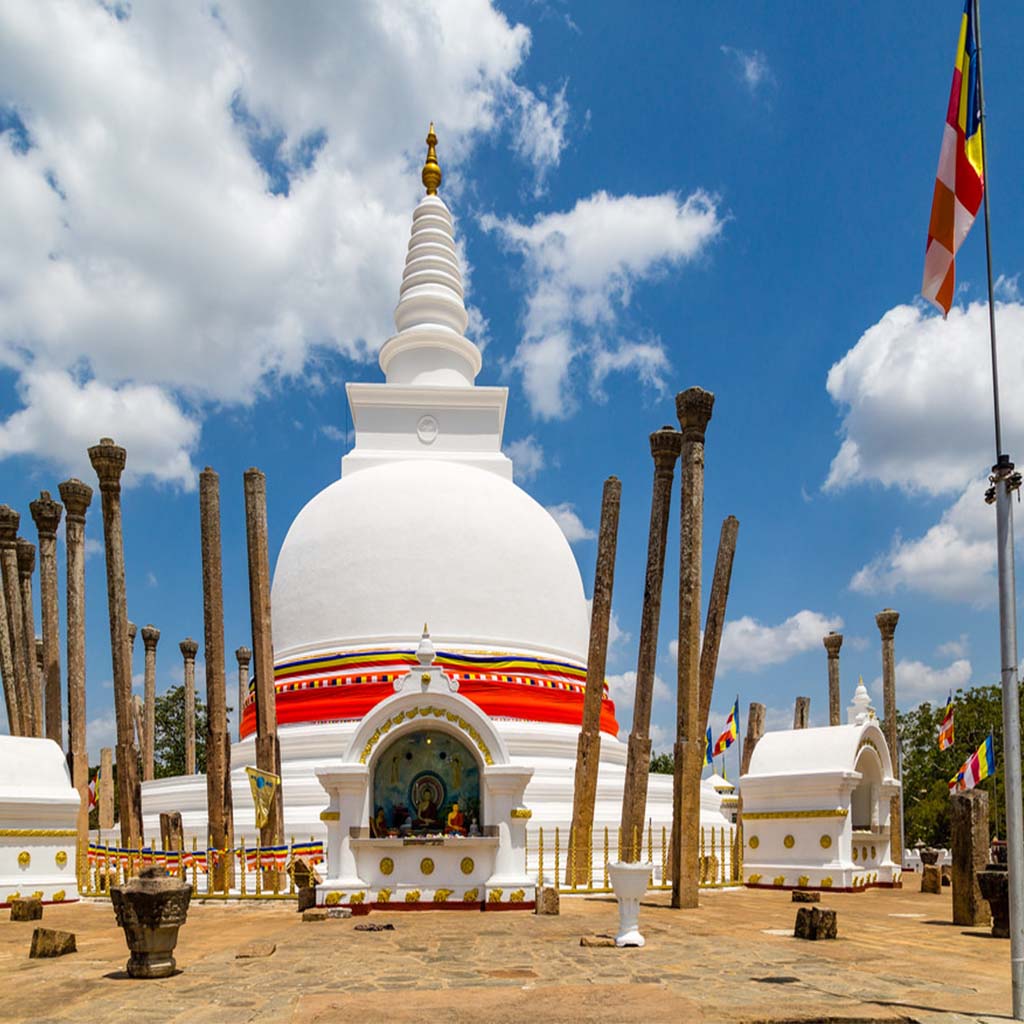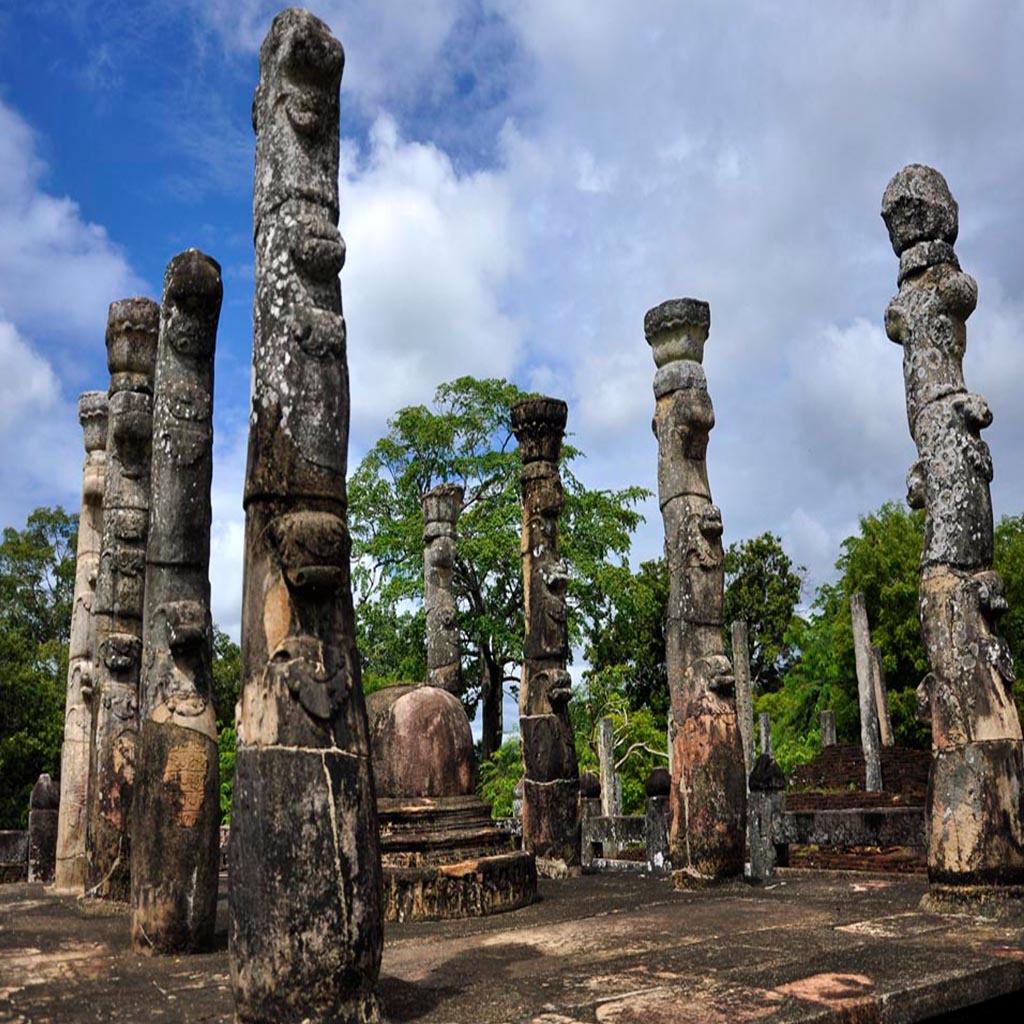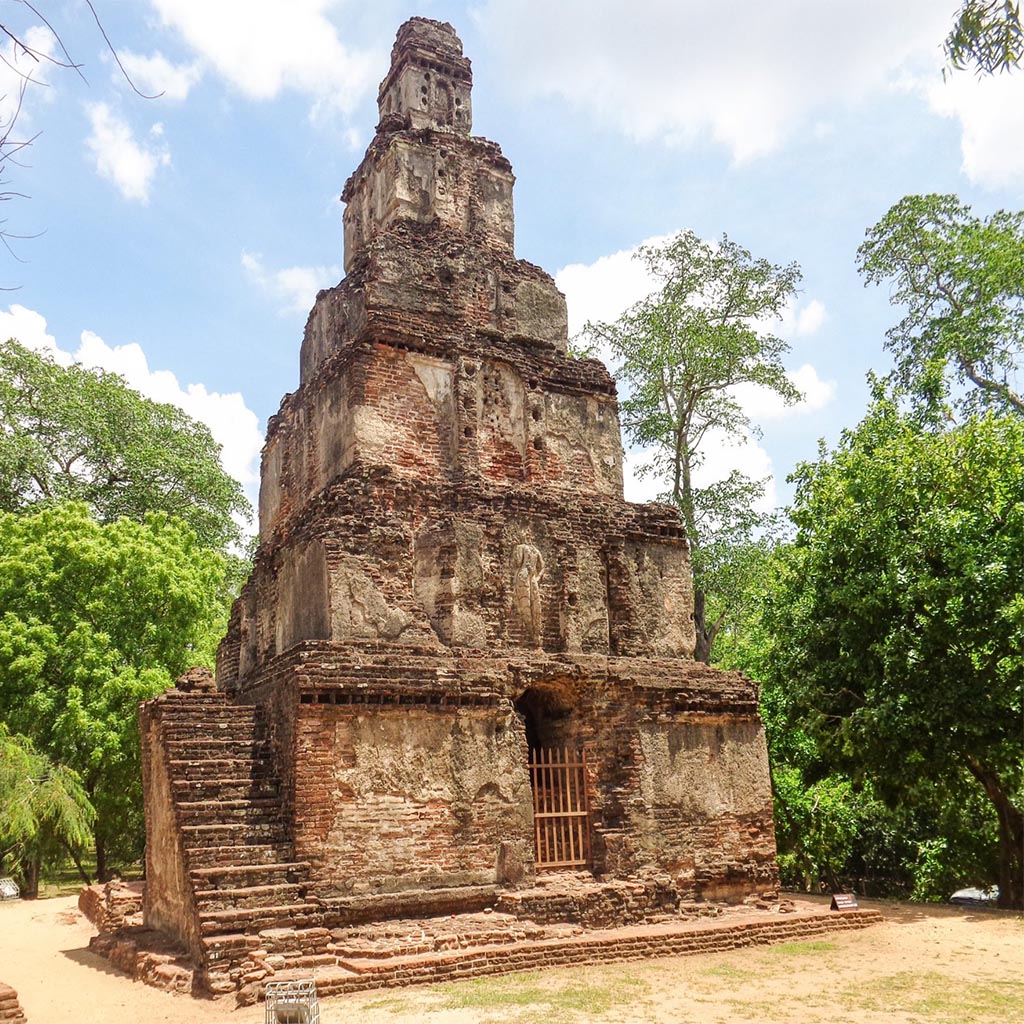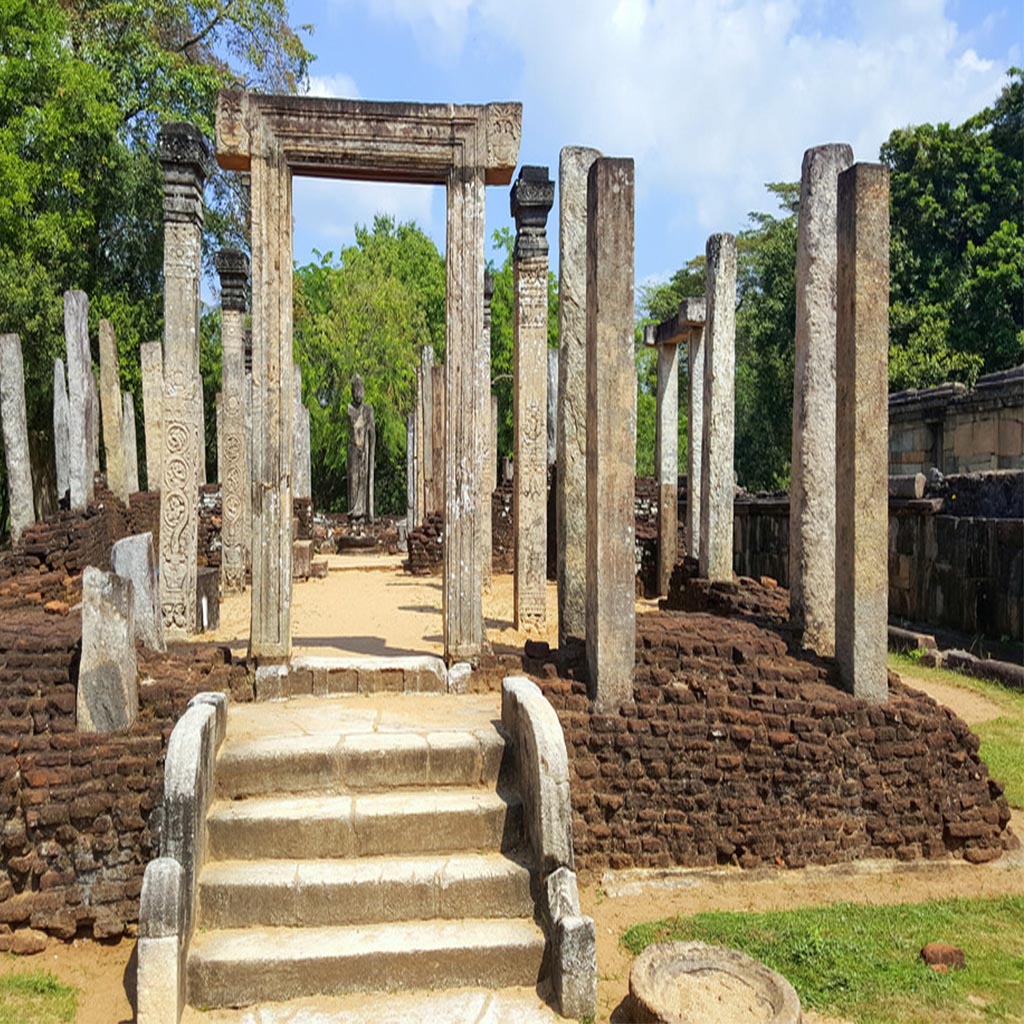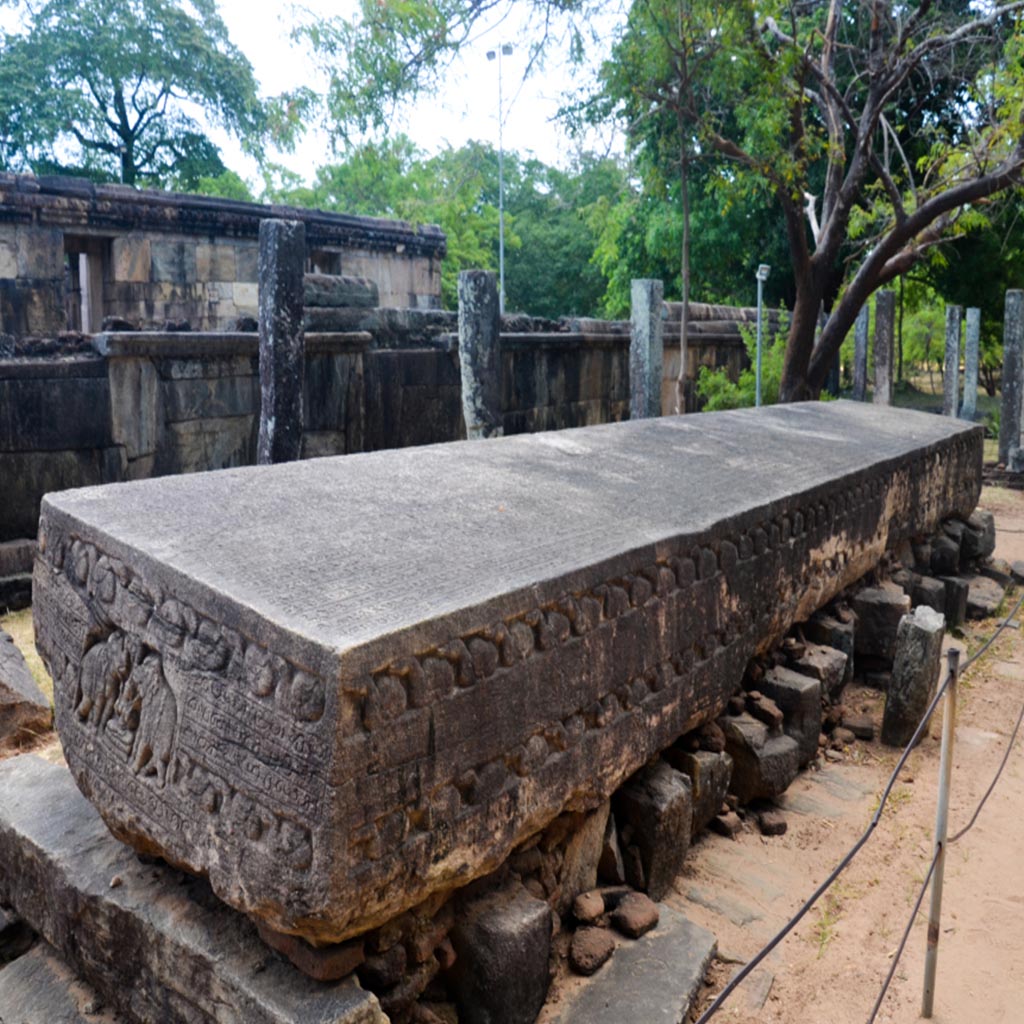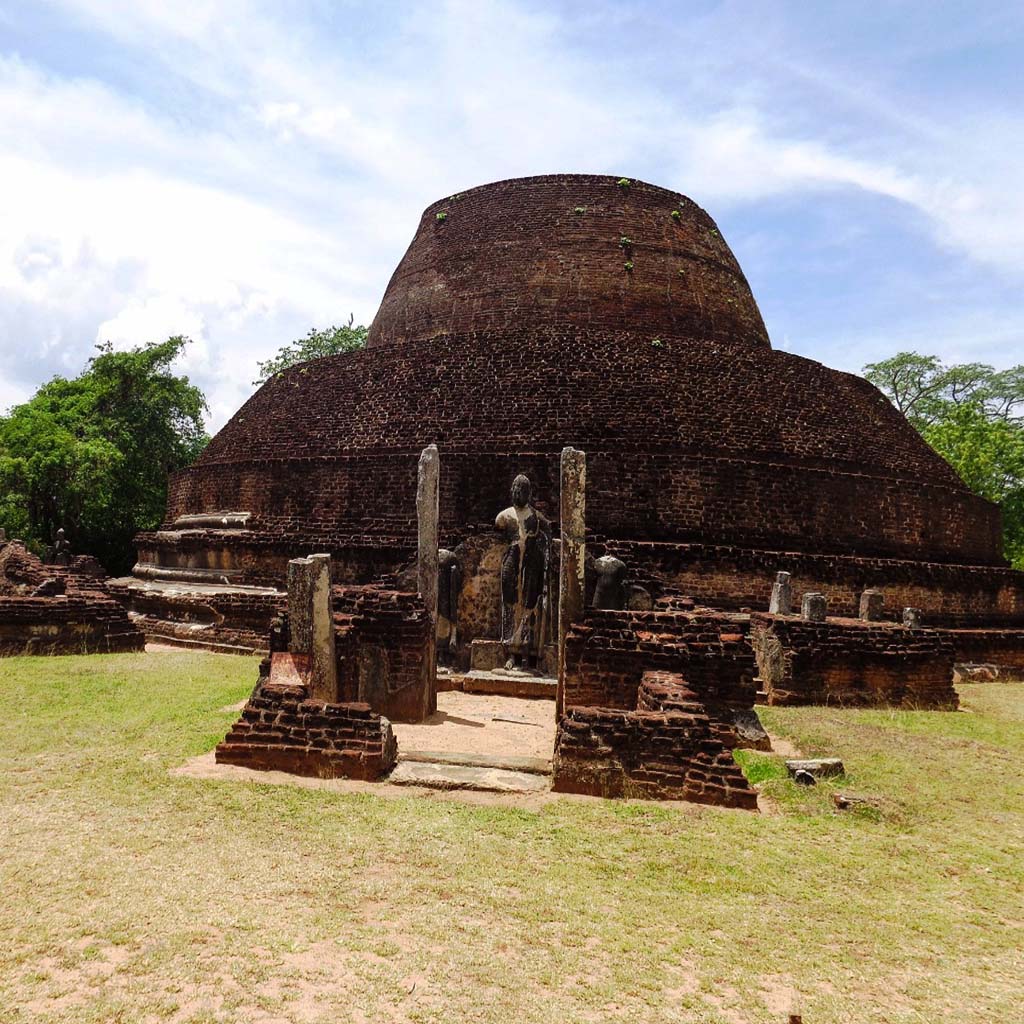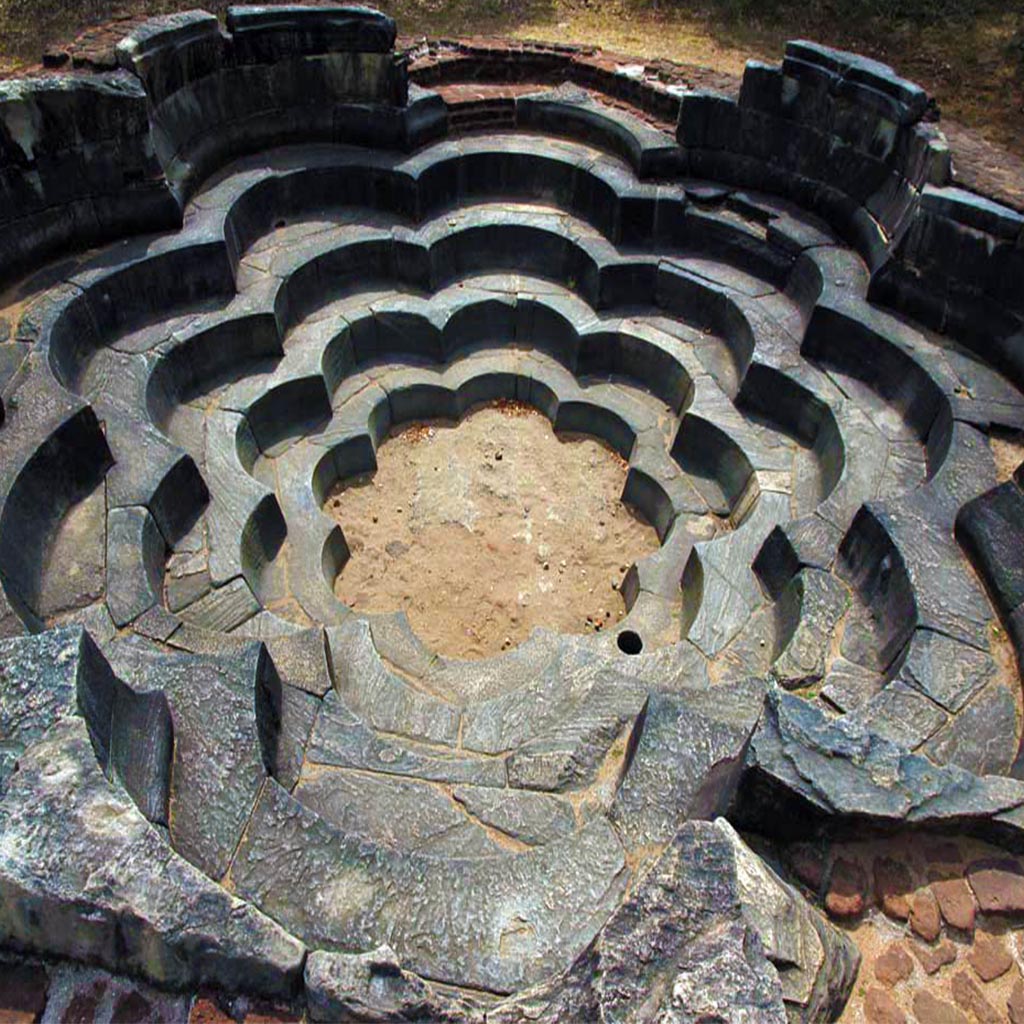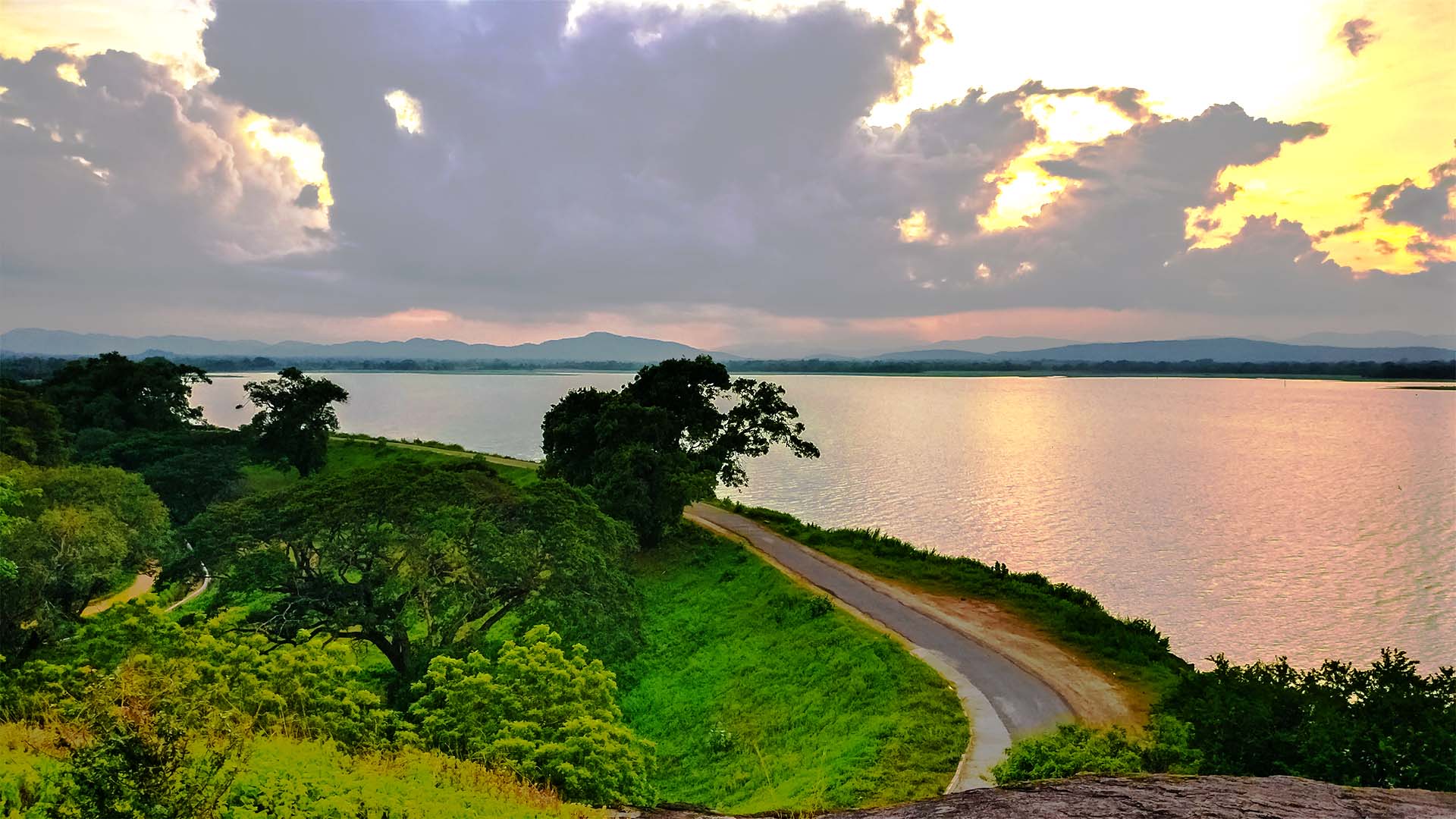Polonnaruwa TOUR
Polonnaruwa replaced the Ancient city of Anuradhapura and had three Kings. Polonnaruwa, the 2nd most ancient kingdom of Sri Lanka is an interesting mix of Buddhist and Hindu structures that are a testament to the different kings who reigned over this ancient kingdom. Polonnaruwa rose to prominence between the 11th and 13th centuries and thrived during the reign of the famous monarch, King Parakramabahu , who did much to create a resplendent city. His greatest achievement was the construction of the sea of Parakrama, a huge water reservoir spanning an area of 6280 acres. The ruins at Polonnaruwa are within walking distance and many of them set in tree-shaded areas, a welcome refuge from the tropical sun
Today, even with the ruins the city looks glorious and elegant. The ruins of the ancient city stand on the east shore of a large artificial lake. The remains are in and around the Topa Wewa Lake or the Parakrama Samudraya which was built by King Parakramabahu the 1st during whose reign was the kingdom known as Golden. Some of the most popular attractions in Polonnaruwa can be named as
Parakrama Samudra (or King Parakrama’s sea or the Sea of King Parakrama) is a shallow reservoir, consisting of five separate reservoirs(thopa, dumbutulu, erabadu,boo, katu tanks) connected by narrow channels in Polonnaruwa, Sri Lanka.
The northernmost reservoir is the oldest and referred to as Topa wewa (Sinhalese wewa = lake or reservoir) built around 386. The middle section Eramudu wewa and the southernmost portion, at the highest elevation, is Dumbutula wewa, both sections were added and the reservoir expanded during the reign of King Parakramabahu
The statue near the Potgul Vehera in Polonnaruwa, commonly known as the statue of Parakramabahu I, is a stone sculpture dating back to the Polonnaruwa period of ancient Sri Lanka. Its identity is uncertain, although the widely accepted theory is that it is a statue of Parakramabahu I. However, it has also been suggested as the statue of a sage. Carved on a large boulder, the statue depicts a majestic figure with a grave expression, holding a book or yoke in his hands.
The Potgul Vehera is located at the southernmost tip of the Polonnaruwa complex. It is a circular building on a terrace in front of the statue of Pararamabahu (or the sage). A beautiful doorframe adorns the entrance. (photo to the right) Apparently the dome of the monument was built entirely of brick using the corbelled method of brick construction. The entire interior wall was once painted. On the four corners of the upper terrace are four small stupas. The lower terrace (photo to the left) contains cells for monks. An inscription states the Parakramabahu built the Potgul Vehera.
A vatadage is a type of Buddhist structure found in Sri Lanka. It also known as a dage, thupagara and a cetiyagara. Although it may have had some Indian influence, it is a structure that is more or less unique to the architecture of ancient Sri Lanka. Vatadages were built around small stupas for their protection, which often enshrined a relic or were built on hallowed ground. Circular in shape, they were commonly built of stone and brick and adorned with elaborate stone carvings. Vatadages may have also had a wooden roof, supported by a number of stone columns arranged in several concentric rows.
Thuparamaya is an ancient Buddhist temple in Anuradhapura, Sri Lanka. Located in the sacred area of Mahamewna park, theThuparamaya Stupa is the earliest Dagoba to be constructed in the island, dating back to the reign of King Devanampiya Tissa(247-207 BC).The temple has been formally recognised by the Government as an archaeological site in Sri Lanka
Nissanka Latha Mandapaya is a unique structure in the ancient city of Polonnaruwa in Sri Lanka. Built by King Nissanka Malla (1187-1196) and named after him, it is located near the western entrance of the Dalada Maluva, the area that contains the oldest and most sacred monuments in the city. A nearby stone inscription identifies this as the building used by Nissanka Malla to listen to pirith (chanting of Buddhist scriptures)
This pyramid-shaped, seven storied building called Sathmahal Prasadaya is thought to be an unusually shaped stupa built during the Polonnaruwa Period (11th -13th century).
There are 4 known square shaped stupa’s in Sri Lanka. The most popular is the Sathmahal Prasadaya. The rest of the 3 stupas can be found in the ancient Anuradhapura kingdom which are rarely visited by the pilgrims
Hatadage is an ancient relic shrine in the city of Polonnaruwa, Sri Lanka. It was built by King Nissanka Malla, and had been used to keep the Relic of the tooth of the Buddha. The Hatadage had been built using stone, brick and wood, although only parts of the brick and stone walls now remain. It appears to have been a two-storey structure, but the upper storey has now been destroyed. Three Buddha statues carved out of granite rock are located within a chamber of the shrine.
The Gal Pota (Stone Book) is a colossal stone representation of an olabook. It is nearly 9m long by 1.5m wide, and 40cm to 66cm thick. The inscription on it – the longest such stone inscription in Sri Lanka – indicates that it was a Nissanka Malla publication. Much of it extols his virtues as a king, but it also includes the footnote that the slab, weighing 25 tonnes, was dragged from Mihintale, an astonishing 100km away.
The origin of this unusually shaped Pabalu Vehera stupa is unknown but it is believed to been built by one of the king Parakramabahu’s ( 1153-1186 AD) consorts, queen Rupawathi. The original name of this stupa is not known. The current name “Pabalu” (meaning beads) was derived from the fact that a large number of small glass beads being found during the excavation of the area around the stupa
Lotus pond (Nelum Pokuna) got its name due to the design, which is similar to a shape of a bloomed Lotus flower. This pond made out of granite and has five levels from bottom to top and that depicts how lotus pates are naturally arranged. There are eight petals in lotus and the outer diameter is 24 ft. 9 inches. It’s believed that this another creation of king Parakramabahu the Great.
Colombo Nelum Pokuna Mahinda Rajapakse Theatre design was done based on this pond.

